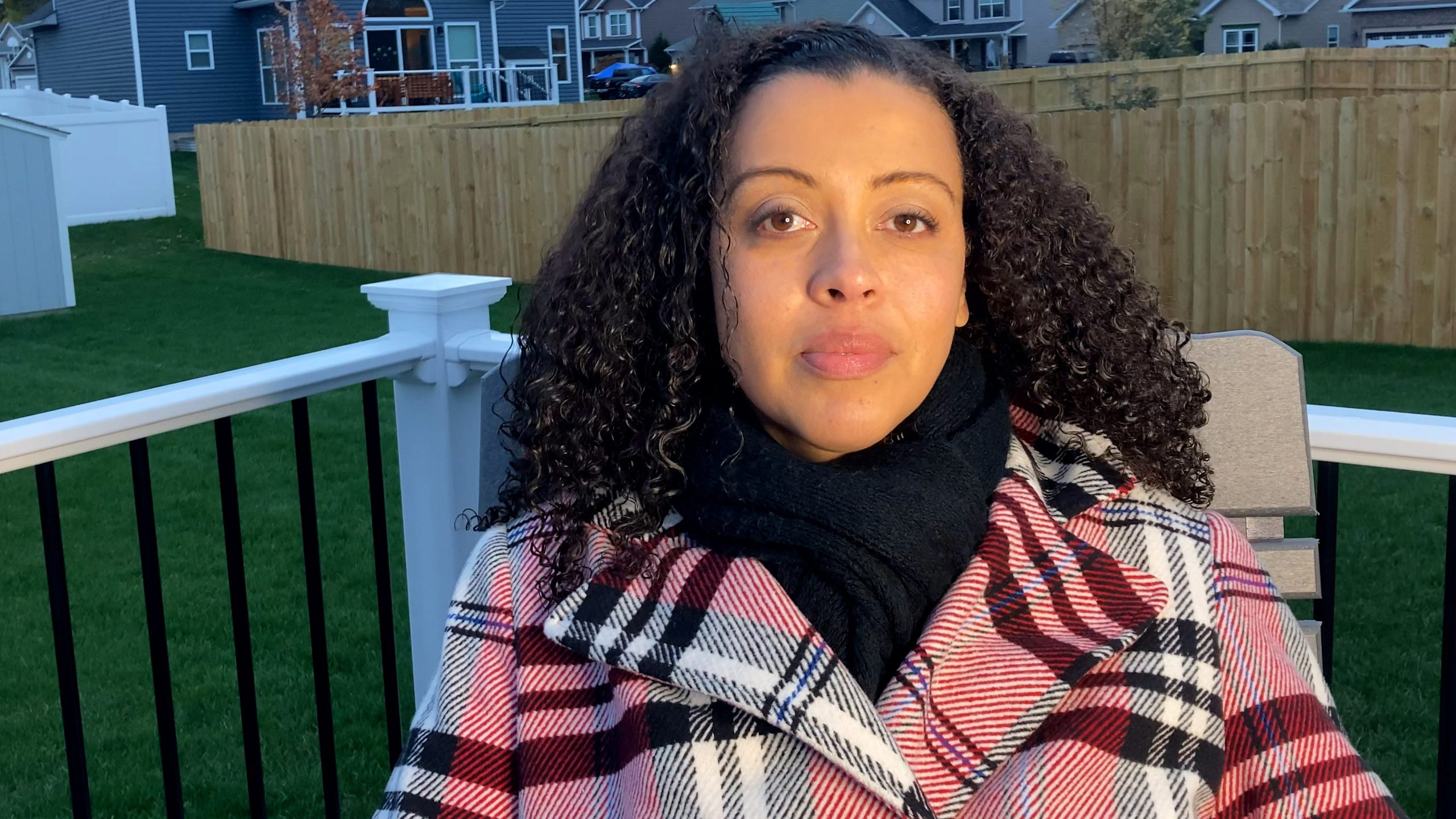Louisiana
As Louisiana looks at recruiting teachers, more Black men are needed
Published
5 years agoon
Editor

LOUISIANA – Marquette Marshall originally started college to study engineering.
He said he fell off the straight and narrow and changed majors five or six times, then joined the Navy before finding his true calling in education.
In the past 22 years, Marshall has acted as Black role model in a district with no majority white school. He’s served as a teacher, counselor or principal in the Monroe City School system at the elementary, middle and high school levels.
He gets immense personal satisfaction from teaching.
But he’s aware that it’s not an idolized profession.
“My mother was a teacher. My father was a teacher, it was very few male teachers back then because you know, it was moreso put out there — in the media it’s put out there and in the neighborhood — a teaching job is for ladies like nursing is for ladies,” Marshall said. “That’s why you have so few Black male nurses, so few Black male teachers — it’s not glamorized enough.”
Marshall followed his father’s footsteps more than planned by majoring in social studies education with a minor in English.
Only about 5% of the teachers in the state look like Marshall. There’s a teacher shortage that has widespread effects, but a priority for Louisiana moving forward is to recruit and retain more Black men to teach and mentor growing generations of African-American students.
We’ve taken a look at why the state needs a more diverse teaching workforce, what higher education organizations are doing to encourage more minority graduates and how a lack of available candidates is affecting schools around the state.
LDOE working to deepen the bench
Louisiana State Superintendent Cade Brumley has made increasing teacher diversity a priority for his administration.
About 57% of the 697,000 students enrolled in Louisiana public schools are minorities, per the Feb. 1, 2021 enrollment count.
According to the Louisiana Department of Education, in the 2019-20 school year, 60% of teachers in Louisiana were white women, and only 5% were Black men.
About 80% of all teachers are women, and 19% are men.
By race:
- 73% are white
- 23.5% are Black
- 1.8% are Hispanic
- .9% are Asian
- .4% are multiple races
“We have to do work as a state to deepen the teaching pool, period, regardless of demographics. We need more teachers, period. And we need to do a better job of training those teachers to be prepared for the classrooms they’re going to lead,” Brumley said.
Brumley said having more Black teachers, particularly men, can have a profound effect on students who might not be able to see themselves in teaching and mentoring positions until they see someone who looks like them in the role.
“We know that if African-American male students between third and eighth grade, if they have access to an African-American male teacher — a mentor — they’re more likely to have better grades. They’re more likely to have less disciplinary referrals. They’re more likely to have better attendance,” he said.
A 2017 study found that if a Black student has a Black teacher between third and fifth grades, boys are 29% to 39% less likely to drop out of school. All Black students were more likely to go to college, and white students’ achievement levels didn’t drop when Black students met their teachers’ higher expectations.
The teacher shortage across the state has real outcomes for students.
About 24% of teachers in classrooms, according to LDOE, are either uncertified or teaching outside the field they certified in. Approximately 19% of all classes have a out-of-field or uncertified teacher.
“We have to do work as a state to deepen the teaching pool, period, regardless of demographics. We need more teachers, period. And we need to do a better job of training those teachers to be prepared for the classrooms they’re going to lead,” he said.
LDOE is investing in high school programming, like the Pre-Educator Pathway pathway in Jump Start and dual enrollment. Giving students exposure to the profession is key.
Teachers, he said, are the best recruiters for the job, so they plan to look at what’s keeping more teachers from recruiting students to the profession.
Marshall said he would tell students it’s not an easy job, and it becomes more demanding through the years because every raise brings a new demand.
The rewards, he said, often come years later when you see former students who are appreciative you taught them, regardless of the hand life had dealt.
“I would tell them, it’s a tough job. It’s challenging. You get good vacation days. That’s one of the big things and you pretty much get every holiday off,” he laughed. “But it’s some needy kids out there, and if you have the heart for kids, you know, it’s something to look into doing.”
Brumley also is considering options to knock down barriers and help classified staff members like aides or paraprofessionals get teaching degrees if they were prevented from pursuing that route in the past. These workers, he said, are highly motivated and already invested in their schools.
But it’s not just about getting more people to earn degrees. It’s about keeping the ones we have.
“Right now, we lose over 40% of teachers within the first five years that we have them and then we lose over 60% within their first 10 years,” Brumley said.
He said LDOE needs to look at the experiences being offered to teachers to help them feel OK with their work, be more effective and want to stay.
He wants to look at data and develop a mentorship program that meets the new teachers’ specific needs.
“As we deepen the bench across the board, of every demographic, I think we have to me mindful of the barriers that are keeping us from seeing more African-American males from entering and staying in the teaching profession.”
At this point, he said, LDOE is still working to get good data on the issue. They’re holding conversations with community and university leaders to determine what the barriers are. He said the department is early in the early days of finding and implementing solutions.
“I’m not there yet, but I am committed to trying to figure this out,” Brumley said.
Getting more graduates: ‘It’s really about belonging’
“It’s important that our campuses are diverse,” said University of Louisiana System President Jim Henderson.
“If we’re preparing graduates for the world of work, they’re going to be working with people that look different than they do, that have different value systems, maybe different belief systems, a different experiential backgrounds. And so it’s incumbent on us to prepare students to work with diverse audiences, and the best way to do that is for them to learn in diverse settings.
Henderson said if young people don’t see leaders who look like them, they might not think teaching and mentorship is a role for them. The cycle continues.
The nine-university network has created the Reginald F. Lewis Educational Equity Initiative, which works to recruit and retain students from underrepresented populations for all degree fields.
“It’s working,” he said. “Elevating diversity and inclusion is a systemic priority.”
He pointed to the CROWN (Colonels Retention of Winners Network) program at Nicholls State University as an effective strategy to encourage Black men to complete degrees.
“They realized that Black male students were succeeding at a surprisingly lower rate than other students, and so they took action, they made it a priority and basically eliminated the success gap,” Henderson said.
It was a matter of being intentional, sharing the support structures in place and creating an overwhelming sense of belonging, Henderson said.
Incoming freshmen are paired with a mentor and have the opportunity to move into dorms a day early, a specific orientation session and more opportunities to connect with support networks.
“We talk about diversity and inclusion and they become words that just kind of pass through our mouths. We don’t understand what they mean,” Henderson said. “It’s really about belonging so that students from all backgrounds, and especially those underrepresented students, when they step foot on a campus, they say, ‘Hey, this is a place where I can succeed.’ That’s an important psychological, emotional aspect of this.”
Ensuring everyone feels like they belong and have the support they need is vital.
Henderson said teacher training across the state has been revamped to give teachers more classroom experience with a mentor before graduation, which is designed to help with retention.
He compared it to nursing. People might aspire to the role, but once you’re in it, there are aspects of the job that casual observers might not know about.
Grambling State University, Louisiana Tech University and Northwestern University have Call Me MiSTER (Mentors Instructing Students Toward Effective Role Models) programs that provide additional leadership development, financial benefits and help with job placement for Black men who want to teach in classrooms.
In a news release from Grambling State, Ja’Deric Talbert of Arcadia said he didn’t initially consider a career in education.
“In my senior year of high school, I served as a reading interventionist at Crawford Elementary School. After working with my students for over six months, and seeing them grow academically and socially, I knew education was my passion,” he said.
Talbert, a sophomore, now serves as the campus president of the Call Me MiSTER program.
GSU program director George Noflin Jr. said that graduates are expected to teach in a public school for each year they received support as a student.
“College student participants with high academic potential, a demonstrated commitment to teach and a servant-leadership orientation are largely selected from among under-served, socio-economically disadvantaged and educationally at-risk communities,” Noflin said. “As graduates, students are expected to have an impact by returning to critical need schools and communities to pursue their professional careers.”
It’s not just about going out and finding more people
“There is not a large number of African-Americans who are graduating from the college of education and pursuing teaching careers,” Bob Hammonds said. “The number continues to decline each year, and the competition for those teachers gets to be tougher and tougher.”
Hammonds is an attorney who has practiced public school law in Louisiana for 40 years and acts as general counsel for the Louisiana School Boards Association. Hammonds has represented boards and staff on a variety of cases, including desegregation and employment discrimination.
Unless under a court order, schools aren’t held to minority hiring requirements and are barred from using race as a hiring factor.
About 15-20 school districts in Louisiana are still under desegregation order, Hammonds said. Different systems are at different stages of final unitary status.
For the federal court and U.S. Department of Justice to agree a school district can be declared unitary, five Green factors must be met:
- faculty and staff assignments
- transportation
- extra-curricular activities
- facilities
- student assignments
Individual factors can be declared unitary, and the district has to reach the goals on all five factors to be released from the lawsuit. Decades can pass with only a few factors declared unitary and others left outstanding.
The Green factor teacher assignment calls for approximately the same percentage of white and Black teachers at each school. Hammonds said that’s more of an assignment issue than a hiring issue, but if you aren’t capable of hiring new teachers — white or Black — the districts don’t have any to assign.
The issue affects schools across the Louisiana.
In Monroe, Black and white administrators were swapped after the school year started in 2016 to meet requirements set by the now-resolved case. U.S. Department of Justice attorneys argued that they didn’t require the swap to be made at that time or in a way that required demotions.
Marshall was principal at Carroll Junior High when he was made assistant principal, as a result of the swap, not because of any error.
“That was the hardest thing, to tell people you got demoted and you didn’t do anything,” he said.
In one desegregation case, Hammonds said, an NAACP chapter argued that a 24% ratio of Black teachers in inadequate for the district. The number is close to the percent of Black teachers available statewide.
“Now, no one has indicated how you can successfully do that with the marketplace as it currently exists. People can complain about the numbers, but they don’t really have any remedies to suggest,” Hammonds said.
He compared the situation to 50 booths at a job fair trying to attract about five candidates.
At the April 20, Monroe City School Board meeting, district Superintendent Brent Vidrine told the board that a recent job fair only drew about 18 candidates.
“Ten years ago, we had 100,” he said.
Monroe’s student population is about 80% black and 13% white with a growing Hispanic population.
The teaching staff is about evenly split with Black and white teachers, which Vidrine pointed out is unusual.
About 80% of Monroe’s teachers are women. Vidrine said it’s difficult to get men into teaching.
Hammonds said faculty and staff assignment requirements can be especially difficult for small, rural districts to meet in light of the available supply of candidates and who is willing to move to a small community without amenities for little pay.
The people most likely to want to move to those areas, Hammonds said, were raised there and want to come back, but that number is also on the decline.
The goals, Hammonds said, keep moving. Initially, it was about the number about how many teachers and students of each race were at each school, and now the factors include special education information and how children are divided each class period.
Once the districts are considered unitary, Hammonds said, schools can no longer consider race for personnel or students.
For Brumley, the need to increase the pool of qualified teachers isn’t about meeting a minimum that will relax later. His goal is to strengthen students, staff, schools and communities through savvy decisions that will have long-term effects.
“Having a diverse workforce or teachers of color — I don’t think that’s just good for students of color. That’s good for every student,” Brumley said.
More than 40% of the students across the state are Black, he said. More than 20% are African-American males but only 5% of teachers are.
“We need to do a better job of making sure that we have mentors that represent the diversity of our state,” Brumley said.





